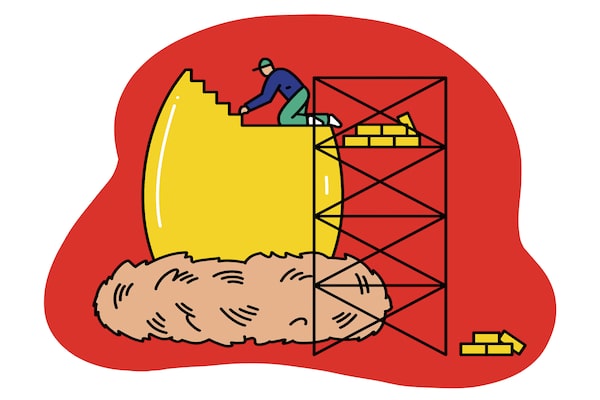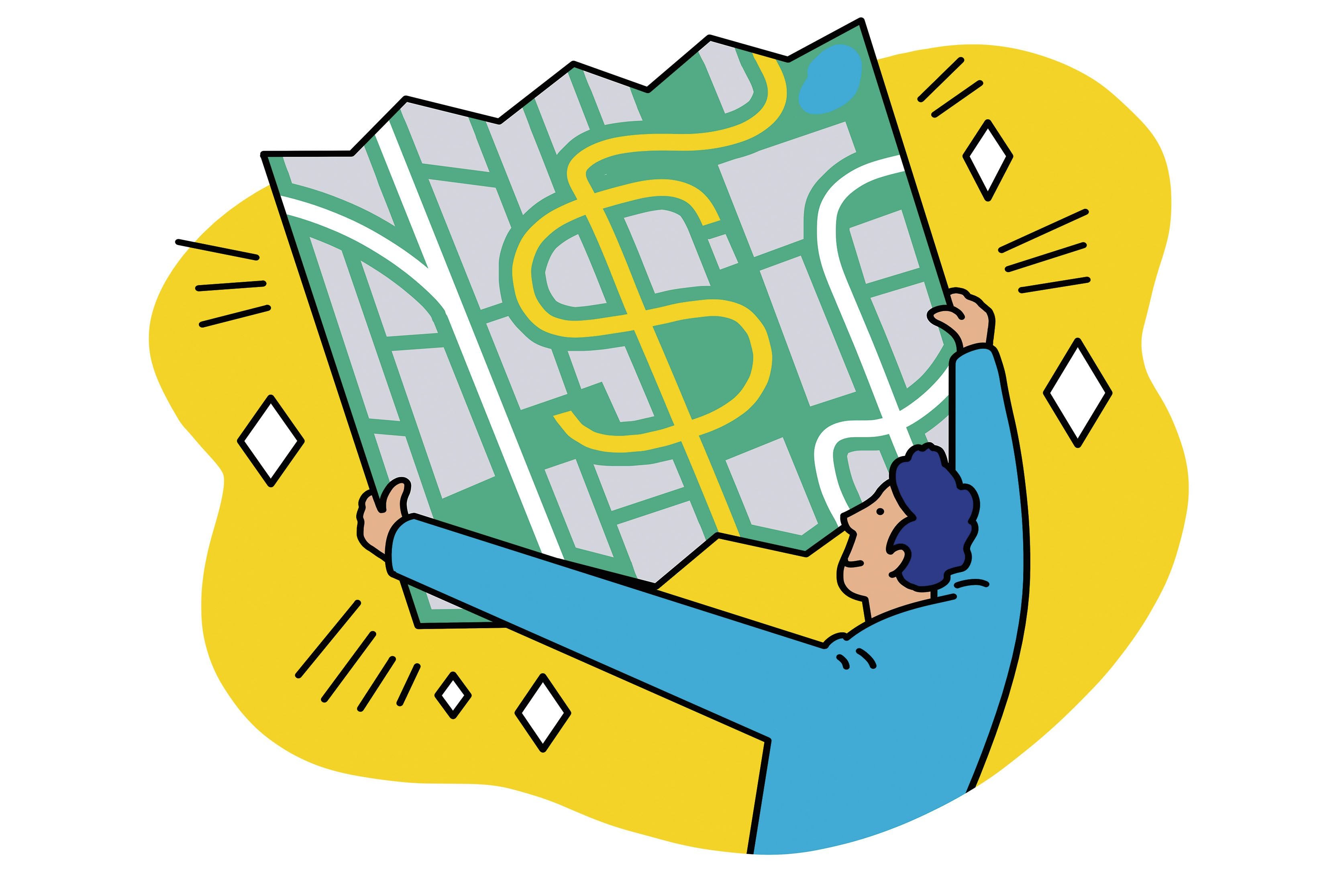
Illustration by Sam Island
Planning for your golden years doesn’t have to scare you. The reality of retirement is far more positive than people think. Ian McGugan answered commonly-asked questions about planning for life after work. Here’s one to start.
How much money do I need to retire?
Let’s start with the good news: It’s not $1.7-million.
That rather intimidating figure was the amount Canadians said was necessary to retire in a poll conducted by the Bank of Montreal earlier this year.
Fortunately, it bears little relationship to the amounts real retirees actually have to make ends meet.
Will I be poor and miserable in retirement? Likely not
A typical household over age 65 has net worth of only about $813,000, according to Statistics Canada. That figure includes not just financial holdings but real estate and other assets as well.
Even if you look at slightly younger people, aged 55 to 65, who are just moving into retirement age and have not yet begun to draw down their wealth, average household net worth doesn’t break $1.2-million. Again, that figure includes not just stocks and bonds, but homes and pensions as well.
It seems most people are managing to retire on far less than pre-retirees think they will need. But exactly how much will you personally require? That depends on four key factors.
How to know if your retirement savings are on track
The first is when you plan to retire. Quitting work at 55 requires more money than at 65, because your savings and investments have to support you for longer. The early going is all on you: Government programs won’t start paying you until you’re in your 60s.
The second key factor is how much of your working income you plan to replace in retirement. This is a tricky question that we will examine in a separate section, but for now let’s assume your answer is 60 per cent.
The third factor is what other resources you can count on. If you’re lucky, you have a gold-plated pension from your employer to fund your retirement lifestyle. However, anyone who has worked and lived in Canada for a few decades can at least depend on the Canada Pension Plan (CPP) and Old Age Security (OAS).
Don’t underestimate the combined impact of these government programs: A 65-year-old who has lived in Canada for most of his or her life can collect more than $8,300 a year from OAS.
CPP and OAS: How the financial supports affect your retirement plans
If that 65-year-old has worked in Canada, they will also collect CPP based on how much they have earned and contributed over the years. A typical CPP payout for a 65-year-old is about $9,100 a year, but it can range up to $15,000 or more for those who have earned higher incomes and worked the longest.
The fourth and final factor in determining how much you must put away for retirement is how aggressively you plan to draw on your savings.
Economists and actuaries have been debating the right strategy for decades, trying to figure out the most that retirees can extract from a stock-and-bond portfolio while keeping their risk of running out of money to a minimum.
Most researchers agree that a 3-per-cent to 4-per-cent annual withdrawal rate offers a high level of safety for someone contemplating a 30-year retirement. In other words, if you start retirement with a $1-million portfolio, you can count on your savings to generate an inflation-adjusted $30,000 to $40,000 a year in income over the next three decades.
Let’s put these pieces together. A typical middle-class couple who earn a combined total of $125,000 a year and want to replace 60 per cent of that income in retirement will require $75,000 a year when they quit work at 65.
If both people have lived and worked in Canada for most of their adult lives, they will probably collect about $20,000 each in OAS and CPP, or $40,000 combined.
Let’s assume one spouse will have a pension from an employer that will pay them $10,000 a year. That brings the total of their government and private pension income to $50,000 a year.
That still leaves them $25,000 a year short of their $75,000 goal. How much in savings do they need to bridge the gap? Based upon a 3-per-cent to 4-per-cent withdrawal rate, somewhere between $600,000 and $800,000 should do it.
To be sure, this is just one example. Low-income earners will need to save less; high-income workers will require more. But once you see how the big pieces of the retirement puzzle work, you can adapt the numbers to your own situation.
The good news? In the vast majority of cases, people don’t need anywhere close to $1.7-million.

Ready to think about your (eventual) financial freedom?
Introducing Retire Rich Roadmap, a 5-part newsletter course to set you up with the tools you need to think about retirement, whether that's happening now or in a few decades. Sign up now – each lesson will land in your inbox on Thursday.
 Ian McGugan
Ian McGugan